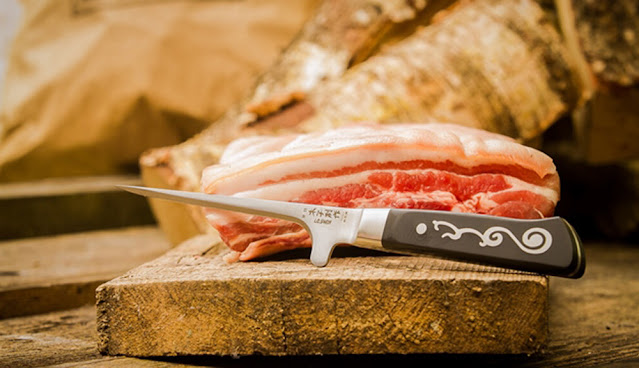Slice, Dice, and Debone Like a Pro: Unveiling the Mastery of the Boning Knife
In the world of culinary arts, precision is key, and having the right tools can make all the difference between a good dish and an exceptional one. Enter the unsung hero of the kitchen – the boning knife. With its slender blade and razor-sharp edge, the boning knife is a versatile and indispensable tool for any home cook or professional chef. Join us as we explore the artistry of the boning knife and why it deserves a prime spot in your kitchen arsenal.
The Anatomy of a Boning Knife
At first glance, the boning knife may seem like any other kitchen knife, but upon closer inspection, its unique features become apparent. The hallmark of a boning knife is its narrow, pointed blade, which is specially designed for precision cutting and maneuvering around bones, joints, and cartilage. The blade may vary in length, with shorter blades offering greater control for intricate tasks, while longer blades provide more leverage for larger cuts.
Versatility and Utility in the Kitchen
From deboning poultry and filleting fish to trimming meat and removing skin, the boning knife excels in a variety of culinary tasks. Its slender blade allows for precise cuts close to the bone, minimizing waste and maximizing yield. Whether you're breaking down a whole chicken, preparing a delicate fish fillet, or trimming excess fat from a steak, the boning knife offers unparalleled versatility and utility, making it an indispensable tool for any kitchen.
Precision and Control for Professional Results
What sets the boning knife apart is its ability to provide unmatched precision and control, allowing for clean, accurate cuts with minimal effort. Whether you're a seasoned chef or a home cook honing your culinary skills, the boning knife empowers you to tackle even the most challenging tasks with confidence and finesse. With its razor-sharp edge and ergonomic handle, the boning knife becomes an extension of your hand, enabling you to achieve professional results every time.
Choosing the Right Boning Knife
When it comes to selecting a boning knife, it's essential to consider factors such as blade length, blade flexibility, and handle comfort. Opt for a blade length that suits your specific needs and preferences, keeping in mind the types of cuts you'll be making most frequently. Additionally, choose a boning knife with a flexible blade for delicate tasks like filleting fish, and a stiffer blade for tougher cuts like deboning poultry.
Caring for Your Boning Knife
To ensure your boning knife remains in optimal condition, it's important to practice proper care and maintenance. Always hand wash your boning knife with mild soap and warm water, avoiding harsh detergents and abrasive scrubbers that can dull the blade. Store your boning knife in a knife block or sheath to protect the blade and prevent accidents. Regularly sharpen your boning knife using a honing steel or sharpening stone to maintain its sharpness and cutting performance.
In conclusion, the boning knife is a culinary essential that deserves a place of honor in every kitchen. With its precision, versatility, and unmatched utility, the boning knife empowers chefs and home cooks alike to tackle any culinary challenge with confidence and skill. So, whether you're deboning a chicken, filleting a fish, or trimming a steak, let the boning knife be your trusted companion on your culinary journey.




Comments
Post a Comment